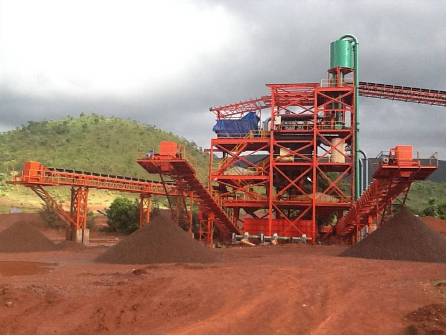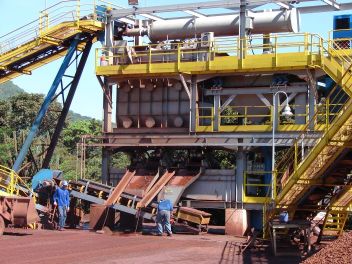Welcome to the World of the Mineral Processing Jig

Introduction
A jig is a simple mineral processing device using water and the force of gravity to separate a raw ore stream by particle density. In many applications this permits a low grade ore stream to be upgraded in quality sufficient for sale: Gangue of different density to the valuable component is rejected into a waste stream, leaving a higher percentage of the valuable component in the product stream compared to the feed. The distinguishing characteristic that separates a jig from other gravity and water based mineral processing devices is the action of a pulsing water current on a bed of ore to alternately fluidize and compact the bed, allowing the denser minerals to settle to the bottom of the bed for subsequent splitting into a product and reject stream.

My History in Jigs
The first time I saw a mineral processing jig was in 1987. Since that moment it has dominated my career as a chemical and process engineer. I have been working on various aspects of jigging right up to the present day. The most fascinating thing about jigs; indeed the aspect that keeps me working with them, is the apparent dichotomy between the simplicity of the device in action, and the underlying theoretical complexity of the stratification process of the ore. After more than 25 years in jigs I am now within a year of achieving my dream of building the very best jig I know how to through my association with the Delkor Jig Group in India.

Acknowledgments
My work with jigs over the years has been conducted with the support of the JKMRC (University of Queensland), Bateman Engineering, and Delkor. Particular thanks goes to Dr. Geoff Lyman of the JKMRC (my thesis supervisor and all round good guy and a genius to boot). Ultimately it is the mining companies that buy and use jigs that fund most of the work. I would particularly like to thank BHP, MIM, Hamersley Iron, Tarong Coal, CRA and Rio Tinto for their financial support over the last 25 years. Delkor's on-going support allows me to develop and maintain this web site as well as continue research and development into various aspects of jigging. Delkor (now part of Tenova) design and build jigs and jig plants, and may be contacted through Delkor or myself. I disclose here that I previously worked on retainer to the Delkor Jig Group Center of Excellence to supply jig related work within my business.
